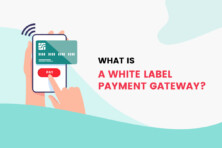 Vladimir Kuiantsev
Vladimir Kuiantsev
CEO of Akurateco
If you’re long enough in the payment industry, you’ve probably heard about both smart routing and cascading. And quite often, people use these terms interchangeably while in reality, they’re not the same. In this article, we’ll explain the difference between both terms and talk to you about decline reason management.

Smart routing, cascading, and decline reason management: why and what for? Source: pixabay.com
What’s smart routing?
Smart routing is a technology that allows to route a transaction to the payment channel that’s most likely to approve it. It’s only going to work if the payment processor implementing it has an extensive list of payment connectors. Thus, for instance, if a French customer is paying in EUR and we know that this transaction is most likely to be accepted by a certain acquirer, we can set a pre-defined rule inside our payment system to immediately route transactions from this location with this currency to a particular terminal.
The idea behind smart routing is that local payment methods are most likely to go through with a local acquirer. And as a rule of thumb, this is exactly how it works.
So, smart routing is what happens before the transaction is declined. In its own way, it’s a preventive measure.
Types of pre-defined rules
If you know your target audience well enough, creating a list of pre-defined rules should not be a problem. You should simply know their geo, understand their payment preferences, and build routes that will ensure an increased approval ratio.
Every payment orchestration platform with built-in smart routing has its own list rules. Thus, Akurateco routes transactions based on:
- Payment card brand (Visa, MasterCard, etc.);
- Currency of the transaction (EUR, USD, ILS, etc.);
- Geography (we can include countries or exclude countries for a particular terminal);
- Transaction amount (e.g., send transactions with smaller amounts to one terminal and bigger checks to a different one);
- BIN (to optimize costs because it’s cheaper to process local transactions through local banks);
- Email domain (e.g., if we understand that users of .ru email domains typically from CIS, we can route their transactions through local acquirers to grow the chance of them being accepted);
- Time of the transaction (thus, if there’s a limit on the volume of transactions going through a single channel, we can set a rule to split it into several smaller ones to send throughout the day. Alternatively, we can balance it out by distributing it between three MIDs to increase the transaction approval ratio and reduce processing costs), etc.
This list isn’t extensive: depending on the specifics, of your customers you can set up the rules that will work for you. Now, let’s define what cascading is.
What’s cascading?
Cascading is a technology that allows distributing already declined transactions between different terminals to increase the approval ratio. For instance, a customer pays for the services. His transaction is declined at the first terminal, but if a payment system has the cascading technology built-in, it will automatically send the transaction to the second one, etc.
Unlike smart routing, cascading occurs after the transaction has already been declined.
How it works
The scenario depends on whether there’s 3DS or a non-3DS terminal in place.
With a non-3DS terminal, the flow is more smooth, albeit not as secure as one would hope. Thus, a customer enters the payment data. After the first acquirer declines the transaction, it’s automatically routed down to the second acquirer with no action required from the customer’s side. In case of another decline, it’ll go on to the third acquirer, etc. This way, the client neither sees these three declines nor does he have repeatedly enter the password.
With a 3DS terminal, the flow is pretty much the same. However, the client will have to re-enter their password after every decline to ensure the security of the transaction. Yet, the good news is they won’t have to re-enter the card data, which saves much time and frustration (hence doesn’t increase the cart abandonment rate).
It’s important to mention that the routes for cascading can be quite flexible, too. The success of their performance 100% depends on your understanding of your target audience, and the level of expertise your payment software provider has to offer. Thus, Akurateco states that thanks to the built-in cascading technology, they got to decrease their decline rate by 20%.
Finally, cascading works both with synchronous and asynchronous transactions.
Decline reason management: What’s it for?
Decline reason management helps translate often incomprehensive reasons payment systems provide after each decline into a human language. Thus, while “CN” might not have any meaning to you in this form when translated, it means “CVV not supported.” The problem is that every payment service provider has its own set of declines reasons, and if you’re using a hundred different payment connectors, you can’t keep track of all their codes. That’s what when decline reason management comes in handy: it will help you both understand the reasoning behind a decline, analyze it, and make business-specific decisions to prevent them in the future.
With decline reason management, a merchant can set up different categories for declines.
Types of transaction declines
1. Soft declines.
A soft decline occurs when the bank approves the transaction, but something goes wrong at some other point in the process. In this case, you should use the cascading to route this transaction to a different terminal.
2. Hard declines.
It occurs when the issuing bank blocks the transaction. Typically, this happens with potential fraudulent cards. There’s no financial sense to work with them, and there’s nothing you can do about it. So, no cascading or any other technology will work at this point.
Cascading is usually set up to work with soft declines when the issuing bank gives the green light, but there is a problem with the terminal. Since there are fees charged for declines, the technology aims to save merchants’ costs.
Why is decline reason management important?
It gives a significant boost to the transaction approval ratio. Basically, when a merchant understands what the problem is, they can prevent it next time, set better routing, or define better cascading rules. And on the customer’s side, if they don’t understand what caused a decline, they’re likely to abandon the cart and not repeat the transaction.
Decline reasons explained serve as a blueprint for action.
Besides advanced decline reason management technology, Akurateco also offers analytics where a client can see the number of declines sorted by categories, connectors, MIDs, etc. This feature aims to help merchants understand the approval ratio on every channel and make better decisions for each one of them.
Over to you
All in all, smart routing, cascading, and decline reason management all serve one goal – to increase one’s transaction approval ratio. In this article, we covered the basic mechanisms behind them and answered the question of how they can be of any help to you.
For sure, there’s more to it than what we’ve covered. But if you understand that that’s one piece missing for you to make your transaction flow smooth as ever, reach out to Akurateco: we’re offering free Demos to all those interested in our white-label payment system.
SEE ALSO:









